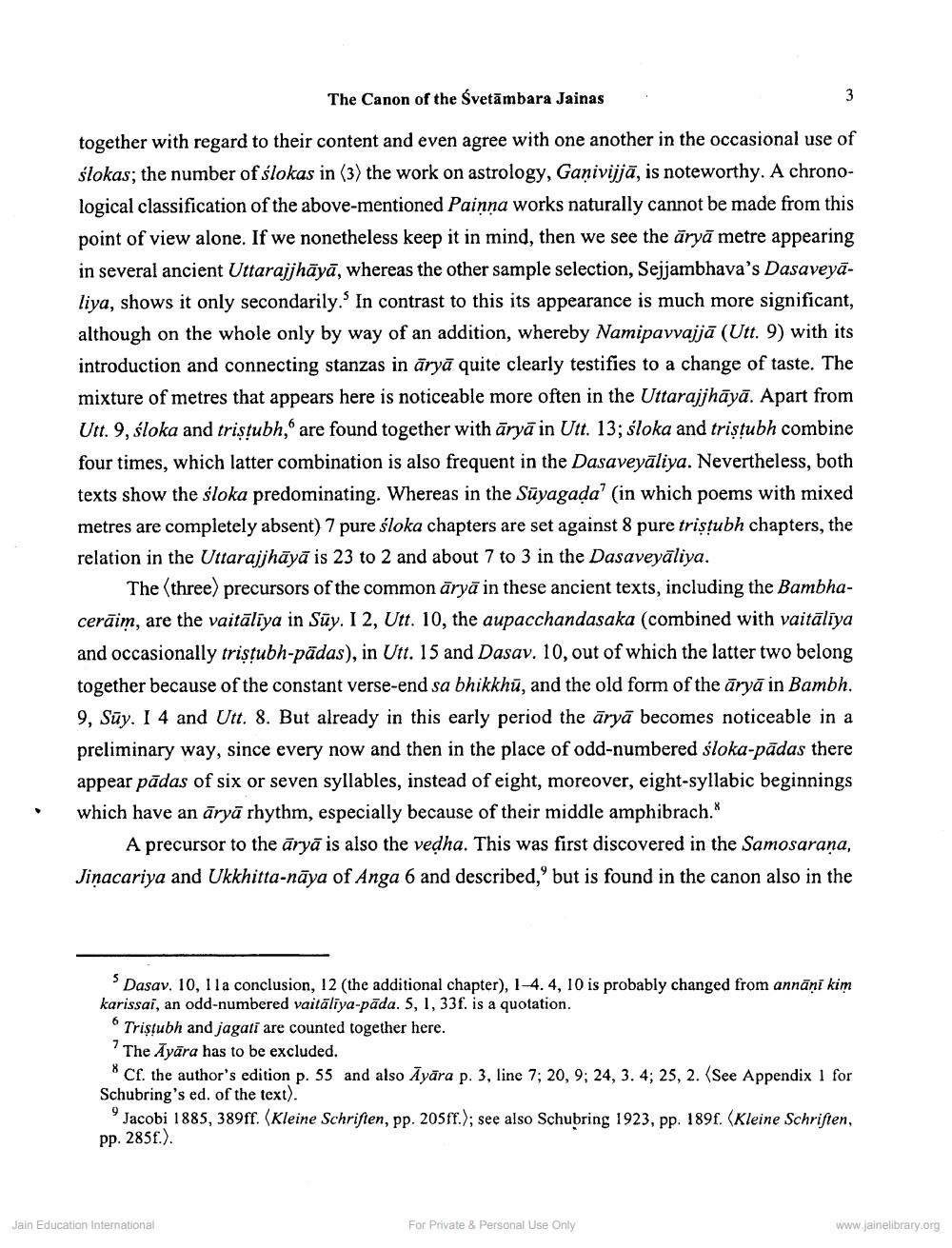________________
The Canon of the Śvetambara Jainas
together with regard to their content and even agree with one another in the occasional use of slokas; the number of slokas in (3) the work on astrology, Gaṇivijjä, is noteworthy. A chronological classification of the above-mentioned Painna works naturally cannot be made from this point of view alone. If we nonetheless keep it in mind, then we see the arya metre appearing in several ancient Uttarajjhäyä, whereas the other sample selection, Sejjambhava's Dasaveyāliya, shows it only secondarily." In contrast to this its appearance is much more significant, although on the whole only by way of an addition, whereby Namipavvajjā (Utt. 9) with its introduction and connecting stanzas in ārya quite clearly testifies to a change of taste. The mixture of metres that appears here is noticeable more often in the Uttarajjhaya. Apart from Utt. 9, sloka and tristubh," are found together with arya in Utt. 13; sloka and tristubh combine. four times, which latter combination is also frequent in the Dasaveyaliya. Nevertheless, both texts show the sloka predominating. Whereas in the Suyagada' (in which poems with mixed metres are completely absent) 7 pure sloka chapters are set against 8 pure tristubh chapters, the relation in the Uttarajjhayd is 23 to 2 and about 7 to 3 in the Dasaveyāliya.
The (three) precursors of the common äryä in these ancient texts, including the Bambhacerdim, are the vaitaliya in Suy. I 2, Utt. 10, the aupacchandasaka (combined with vaitaliya and occasionally trişṭubh-pädas), in Utt. 15 and Dasav. 10, out of which the latter two belong together because of the constant verse-end sa bhikkhu, and the old form of the arya in Bambh. 9, Suy. I 4 and Utt. 8. But already in this early period the arya becomes noticeable in a preliminary way, since every now and then in the place of odd-numbered sloka-pädas there appear padas of six or seven syllables, instead of eight, moreover, eight-syllabic beginnings. which have an äryä rhythm, especially because of their middle amphibrach."
A precursor to the arya is also the vedha. This was first discovered in the Samosarana, Jinacariya and Ukkhitta-naya of Anga 6 and described," but is found in the canon also in the
3
5
Dasav. 10, 11a conclusion, 12 (the additional chapter), 1-4. 4, 10 is probably changed from annāṇī kim karissai, an odd-numbered vaitālīya-pāda. 5, 1, 33f. is a quotation.
Tristubh and jagati are counted together here.
'The Ayara has to be excluded.
8 Cf. the author's edition p. 55 and also Ayara p. 3, line 7; 20, 9; 24, 3. 4; 25, 2. (See Appendix 1 for Schubring's ed. of the text).
"Jacobi 1885, 389ff. (Kleine Schriften, pp. 205ff.); see also Schubring 1923, pp. 189f. (Kleine Schriften, pp. 285f.).
Jain Education International
For Private & Personal Use Only
www.jainelibrary.org




